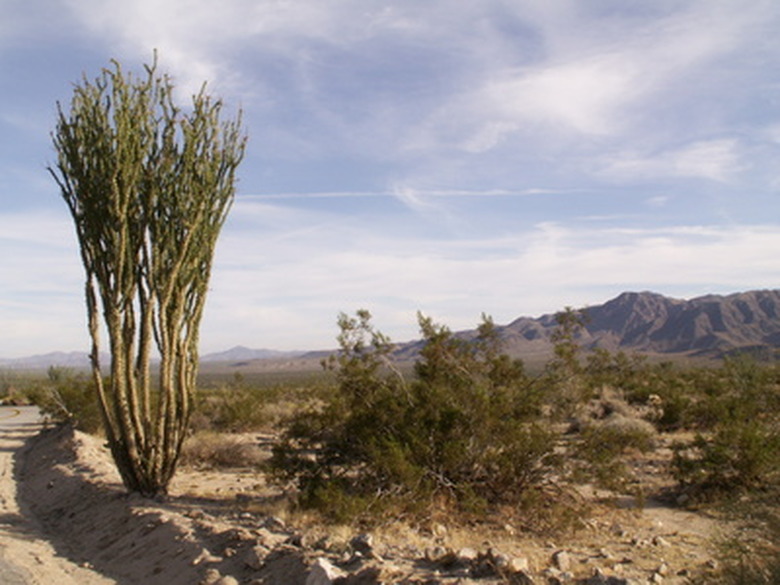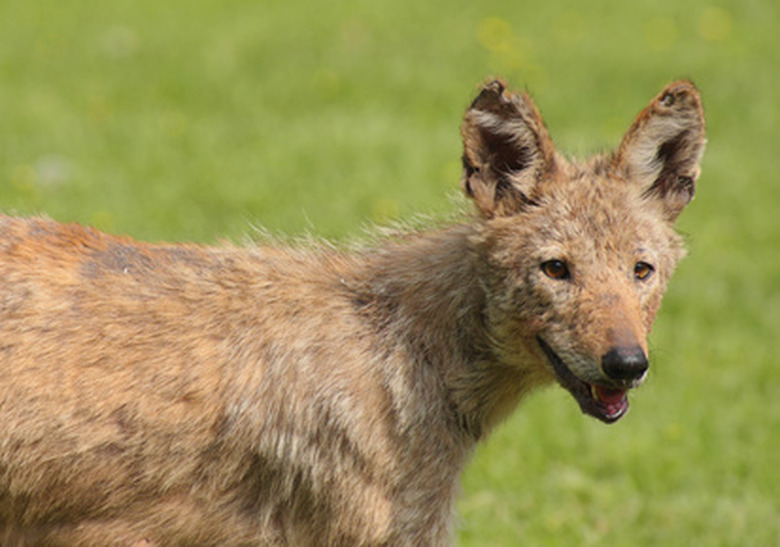Biotic Factors In Deserts
Plants and animals that live in the desert are conditioned to endure extreme temperatures with minimal water. The number of plant and animal species tenacious enough to survive in the desert number in the tens of thousands, which is a small fraction compared to the hundreds of thousands of plant and animal species that live in the rain forest. Plants and animals in the desert are biologically limited in productivity and diversity due to the relative scarcity of organic nutrients.
Desert Plants
Desert Plants
The drought-tolerant plants in the desert include wildflowers, cactus and succulents, trees, shrubs, grasses, creosote shrubs, riverside cottonwoods and willows. With minimal water, desert plants, wildflowers, trees and shrubs utilize the abundant energy of the desert sun to produce more plant life, which serves to fuel the desert animals and insects.
Desert Mammals
Desert Mammals
Desert mammals such as bears, bobcats, coyotes, kit foxes, mule deer, raccoons, rabbits, gophers and squirrels stay cool in the peak desert heat by hiding out in trees or digging burrows underground.
Mountain lions and bobcats are the elusive carnivores of the desert, hunting deer, rabbits, birds, snakes and rodents primarily at night. Coyotes, kit foxes and raccoons are omnivores that survive in the desert by eating cacti, frogs, toads, fish, rabbits, squirrels and anything else they can scavenge.
Mule deer, rabbits and gophers are herbivores that eat roots, tubers, grasses and prickly pear.
Desert Birds and Fish
Desert Birds and Fish
The desert is home to a variety of birds, such as hawks, owls, ostriches, woodpeckers, cactus wrens and turkey vultures (also known as buzzards).
Desert hawks and owls are carnivores that hunt small mammals, insects and other birds primarily at night, while turkey vultures are carnivores that feed on the dead carcasses of other animals. Ostriches are omnivores that feed on plants, insects, small vertebrates and invertebrates. Woodpeckers and cactus wrens are omnivores that eat ants, beetles and other insects, as well as plants and tree bark.
Desert fish live in the warm pools that are remnants of ancient lakes. The desert pup fish is a low-desert stream fish that feeds on algae and often dies off when the pools dry up during the hottest months. The Sonoran Desert has more than 100 species of freshwater fish. These fish live in what little freestanding water remains from rivers that existed a century ago. Fish such as the loach minnow live in shallow riffles of water only 6 inches deep over gravel beds, feeding almost exclusively on fly larvae. Lower-elevation desert lands still maintain large populations of native fish, including the top minnow, long squawfish, Yaqui chub, desert suckers, razorback sucker and the bonytail chub.
Desert Reptiles and Amphibians
Desert Reptiles and Amphibians
The heat-loving, thick-skinned reptiles and amphibians of the desert include rattlesnakes, lizards, toads and tortoises. Rattlesnakes eat lizards, rodents and small mammals such as rabbits. Desert toads, such as the Sonoran Desert toad, feed on insects, spiders and small mice. Desert lizards, such as the Texas horned lizard, eat vegetation, ants, grasshoppers, insects and small animals. Desert tortoises are herbivores, although occasionally they eat carrion and insects.
Desert Insects and Spiders
Desert Insects and Spiders
Insects and spiders that reside in the desert include bees, ants, butterflies, wasps, mosquitoes and black widow spiders. Bees and butterflies feed on available plant nectar. Wasps and black widow spiders feed on insects and other spiders, while ants eat whatever they can scavenge.
Cite This Article
MLA
Stefan, Tracy. "Biotic Factors In Deserts" sciencing.com, https://www.sciencing.com/biotic-factors-in-deserts-12384026/. 21 July 2017.
APA
Stefan, Tracy. (2017, July 21). Biotic Factors In Deserts. sciencing.com. Retrieved from https://www.sciencing.com/biotic-factors-in-deserts-12384026/
Chicago
Stefan, Tracy. Biotic Factors In Deserts last modified March 24, 2022. https://www.sciencing.com/biotic-factors-in-deserts-12384026/





